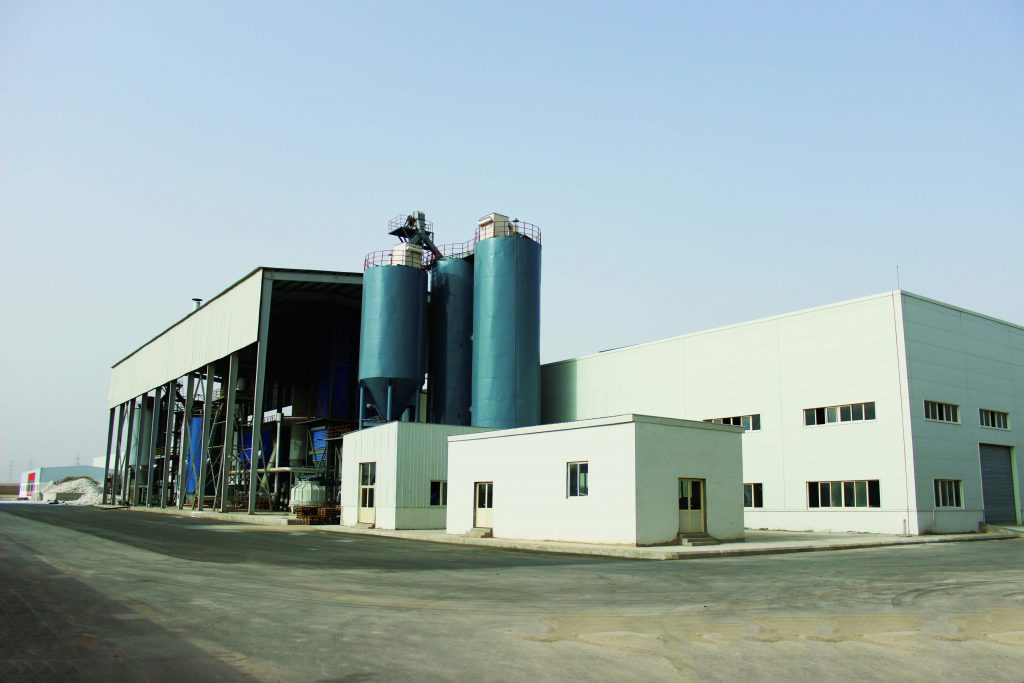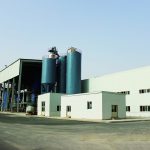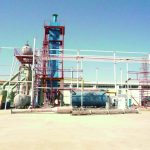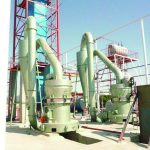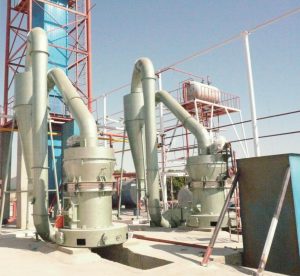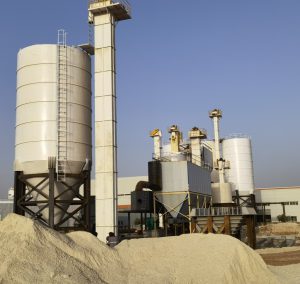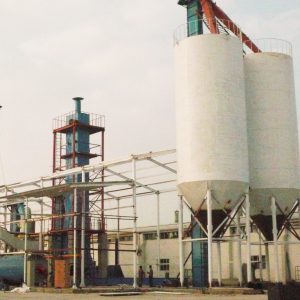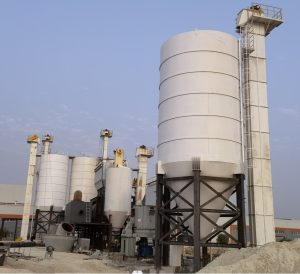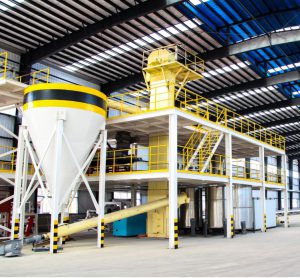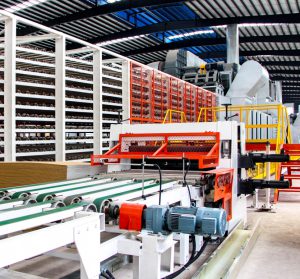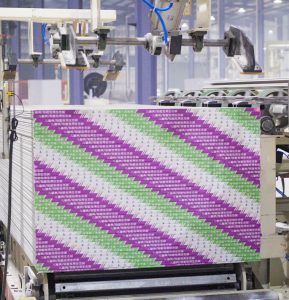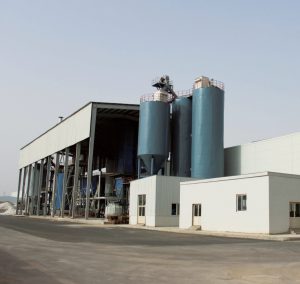| Nom: | Plaster Of Paris Plant | Annual Capacity: | 30000-500000 Tons/year |
|---|---|---|---|
| Calcination System: | Fulidized Furnace, Rotary Kiln, Kettle | Fuel Type: | Coal, Natural Gas, Oil, Etc |
| Raw Material: | Gypsum Rock/mine | Silo: | Provided By The Buyer |
| Installation: | We Will Send The Technician To The Site For Guiding Installation | Control System: | PLC Control |
| Usages Of Finished Product: | Building Material For Construction | After-sales Service: |
The powder materials which are from grinding powder process or powder silo, they will through vertical, horizontal conveyor and then through measuring screw conveyor into boiling furnace for calcination. Boiling furnace take high temperature heat transfer oil as heat source, high temperature heat transfer oil is provided by coal-fired thermal oil boiler. When the high temperature transfer oil enter boiling furnace, its heat will transmit to gypsum powder by heat exchanger, and make CaSO4 *2H2O become into CaSO4 *1/2H2O (building gypsum). During calcination, we adjust discharge temperature according to raw gypsum’s feeding quantity, calcined building gypsum continuous automatic discharge from boiling furnace, and are conveyed to building gypsum silo pass through screw conveyor and bucket elevator. And the heat transfer oil will return flow into coal-fired thermal oil boiler for reheat.
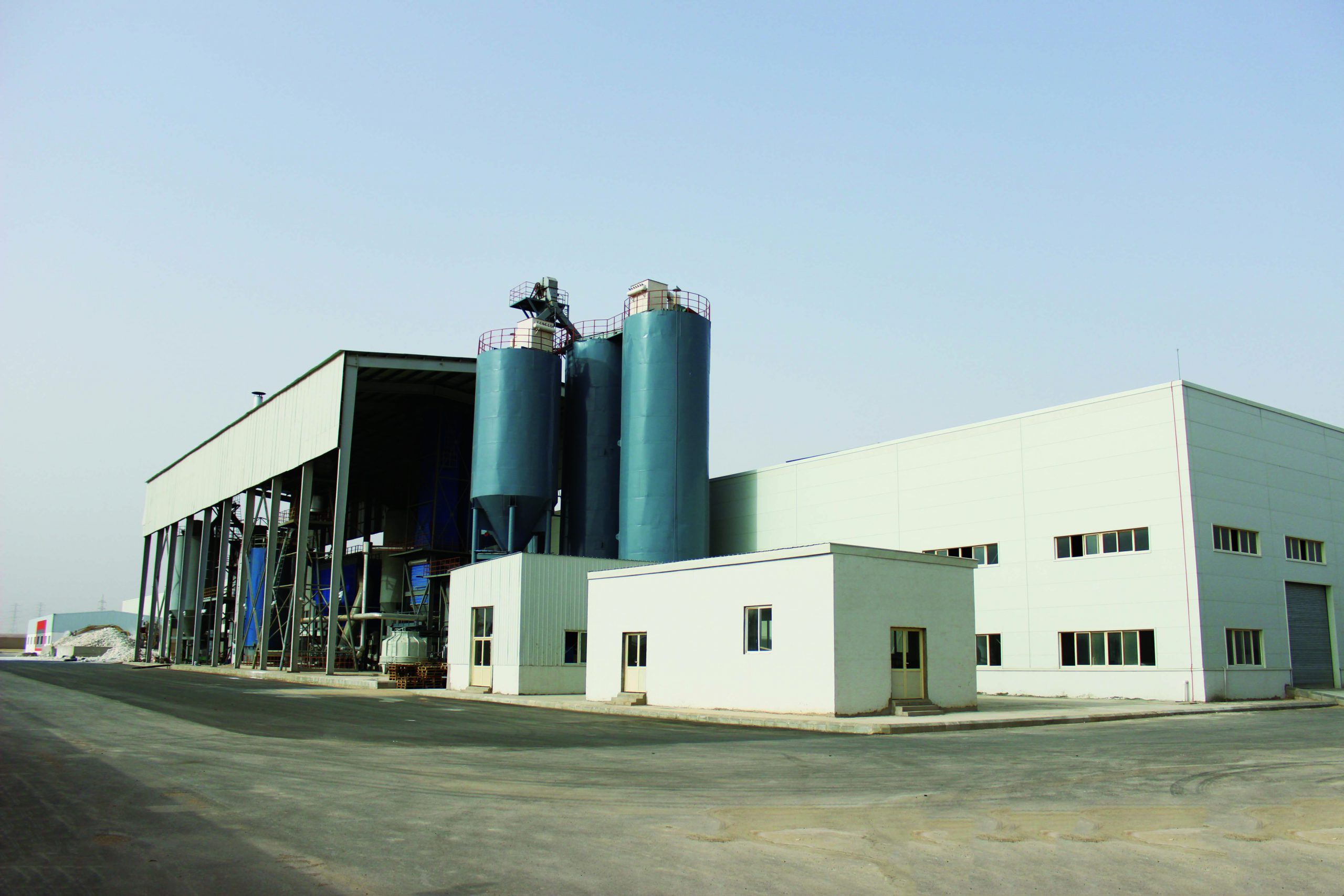
gypsum machine
The Brief Introduction of Natural Gypsum
The natural dihydrate gypsum (CaSO4·2H2O) is also called raw gypsum. After calcination and grinding, β hemihydrate gypsum (CaSO4·H2O), that is, building gypsum, also be known as plaster of Paris and lime mud. The gypsum mine is mainly composed of sedimentary deposits, and the reserves account for more than 90% of the country. The epigenetic and hydrothermal metamorphic gypsum mines are not very important. Gypsum mines have been produced in all ages, with the Early Cretaceous and Tertiary sedimentary gypsum deposits being the most important.
The most widely used natural gypsum is dihydrate gypsum, the active ingredient of which is calcium sulfate dihydrate. Generally, the gypsum is graded according to the content of calcium sulfate dihydrate in the ore. Gypsum has a wide application field and many types of products. Different usages have different requirements on the quality of gypsum raw materials. High-grade gypsum is mostly used in the production of special gypsum products such as edible, medical, art, model and chemical fillers, etc.; The gypsum ore with a calcium sulfate content of less than 60% is rarely used; more than 60% of gypsum ore is used in various fields such as building materials and construction etc., according to its content.
Capacity of Natural Gypsum Powder Production Line
| ton/year | ton/hour | Gypsum Stone Consumption ton / year | Heating Medium
|
Heat Resource |
| 20,000 | 2.78 | 24,000 | Thermal Oil, Hot Air, Steam |
Coal, Natural Gas, Light Oil, Heavy Oil, Biomass, Steam |
| 30,000 | 4.12 | 36,000 | ||
| 40,000 | 5.56 | 48,000 | ||
| 60,000 | 8.24 | 72,000 | ||
| 80,000 | 11.11 | 96,000 | ||
| 100,000 | 13.88 | 120,000 | ||
| 150,000 | 20.83 | 180,000 | ||
| 200,000 | 27.78 | 240,000 | ||
| 30,0000 | 41.66 | 360,000 |
Natural Gypsum Production Process Description
The gypsum stone is sent from the raw material pile to the material receiving steel hopper by the loader, and the large gypsum stone is crushed by the crusher to reach the required particle size of the process, and the material that meets the requirements of the particle size is stored in the raw material storage silo through the conveying device. The small material are transported by metering to the mill for grinding, and the block materials will be ground into powder in the mill to reach the required fineness of the process. The powder is transported into the buffer silo through the conveying device for buffering. Then, the powder is uniformly conveyed to the gypsum powder calcining equipment through the metering feeding device, and the gypsum powder will complete the conversion of the dihydrate gypsum to the hemihydrate gypsum. After the calcination is completed, it is modified by the ball mill, cooled by the cooler , and then transported to the finished product warehouse through the conveying equipment for storage and aging.

 Hebei Lvjoe Machinery Development Co., Ltd
Hebei Lvjoe Machinery Development Co., Ltd
